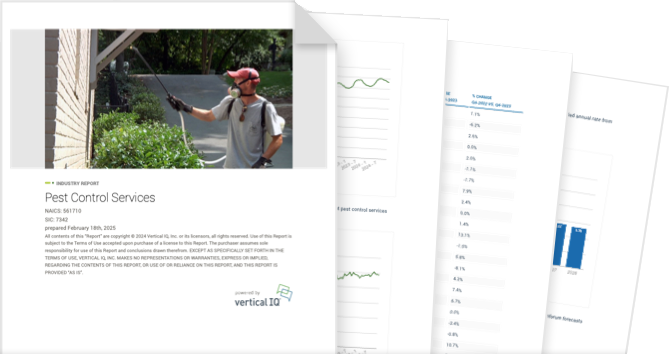Building Materials Distributors NAICS 4233

Unlock access to the full platform with more than 900 industry reports and local economic insights.
Get access to this Industry Profile including 18+ chapters and more than 50 pages of industry research.
Industry Summary
The 10,324 Building materials distributors in the US purchase and resell a variety of products used in the construction of residential and commercial structures. Companies may offer a wide range of products or specialize in a category, such as roofing materials. Companies often offer related services, such as materials delivery, technical assistance, logistics, design, and fabrication. Customers include contractors, home builders, building owners, and resellers (dealers, home improvement stores).
Dependence on Construction Industry
Demand for building materials is highly dependent on the health of the construction industry, which is cyclical and vulnerable to economic conditions.
Building Materials Cost and Supply
The cost of building materials can vary, depending on pricing trends for underlying commodities.
Recent Developments
Dec 10, 2025 - Top Home Improvement Players Notch Tougher Q3
- Home Depot and Lowe’s faced headwinds in the third quarter as housing market weakness and economic uncertainty dampened home improvement demand, according to Retail Dive. Home Depot’s net sales rose 2.8% over Q3 2024, boosted by its $900 million acquisition of GMS, but net income fell 1.3%. Comparable sales were nearly flat. Lowe’s reported a 3% year-over-year sales increase, with gains in pro sales, home services, and online purchases, though net income fell 4.7%. Both retailers cited weaker demand for large discretionary projects and revised their outlooks downward. Each continues to target professional customers, with Home Depot acquiring GMS and Lowe’s planning to acquire Foundation Building Materials. The sector remains pressured by cautious consumers and limited housing activity.
- Nonresidential building construction starts increased 17.9% in October compared to the previous month, according to Dodge Construction Network. Commercial starts rose 19.5%, led by data centers (+45.5%) and retail stores (+15.1%). Office construction starts also improved, but starts were lower for hotels (-19.3%), warehouses (-1.7%), and parking garages (-46.1%). Institutional starts grew 3.7% due to project categories other than education and healthcare, which saw starts fall 20.8% and 2.7%, respectively. Manufacturing starts jumped 107.2% in October compared to September, but the sector remains volatile from month to month. Nonresidential building starts were up 5.6% for the first 10 months of 2025 compared to the same period in 2024. On a year-to-date basis, commercial and industrial starts increased 13.6%, while institutional starts fell 2.2%.
- America’s largest homebuilders are struggling to sell new homes despite offering 4% mortgages and deep discounts, according to The Wall Street Journal. D.R. Horton and Lennar have slashed prices and added incentives, but demand remains weak, pushing unsold inventory to levels last seen in 2009. Builders are slowing construction, with D.R. Horton cutting starts by 21% year over year for the three-month period through September. Regional gluts in Texas, Florida, Southern California, and Washington, DC reflect rising resale competition, fewer foreign buyers, and economic uncertainty. Investor activity is at a 15-year low, with institutional buyers demanding steep discounts that builders won’t meet. New homes, often located in less desirable areas and targeted at first-time buyers, are more challenging to sell.
- Home remodeling spending is expected to remain stable for the rest of this year and through mid-2026, according to the Leading Indicator of Remodeling Activity (LIRA) report released in October by the Joint Center for Housing Studies at Harvard. Homeowner improvements and repairs are expected to increase 1.9% to $511 billion in the fourth quarter of 2025, compared to Q4 2024. In the first quarter of 2026, remodeling spending is expected to reach $524 billion, representing a 2.4% increase from the first quarter of 2025. Spending will then moderate to $519 billion in Q2 2026, up 2.1% from Q2 2025. In the third quarter of 2026, year-over-year spending is forecast to rise 1.9% to $517 billion. While solid remodeling permitting activity and gradually improving single-family home sales will support remodeling activity, potential headwinds include continued weakness of housing starts and economic uncertainty.
Industry Revenue
Building Materials Distributors

Industry Structure
Industry size & Structure
The average building materials distributor operates out of 1-2 locations, employs 26 workers, and generates $31.3 million annually.
- The building materials distribution industry consists of about 10,324 companies that employ 266,800 workers and generate about $323.6 billion annually.
- The industry is concentrated; the top 50 firms account for about 54% of industry sales.
- Many companies are small, independent operations and serve a local or regional geographical market.
- Large companies include ABC Supply, Builders FirstSource, and Beacon Roofing Supply. Large home center chains, such as Home Depot and Lowes, are also major suppliers of building materials.
Industry Forecast
Industry Forecast
Building Materials Distributors Industry Growth

Vertical IQ Industry Report
For anyone actively digging deeper into a specific industry.
50+ pages of timely industry insights
18+ chapters
PDF delivered to your inbox
